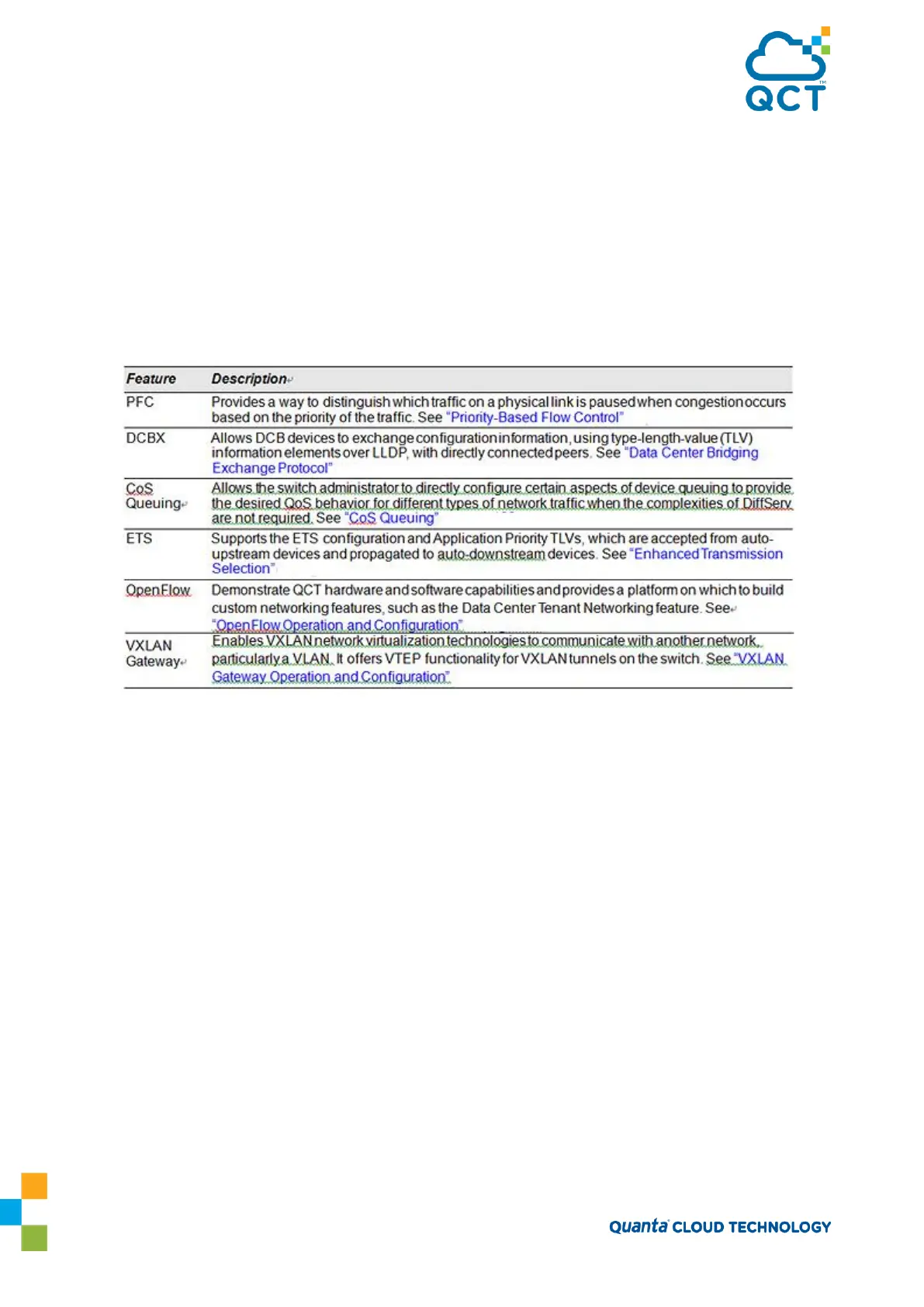232
9. Configuring Data Center Features
9.1. Data Center Technology Overview
QNOS software supports Data Center Bridging (DCB) features to increase the reliability of Ethernet-based
networks in the data center. The Ethernet enhancements that DCB provides are well suited for Fibre
Channel over Ethernet (FCoE) environments.
Table 24 provides a summary of the features this section describes.
Table 9-1: DCB Features
9.2. Priority-based Flow Control
Ordinarily, when flow control is enabled on a physical link, it applies to all traffic on the link. When
congestion occurs, the hardware sends pause frames that temporarily suspend traffic flow to help prevent
buffer overflow and dropped frames.
PFC provides a means of pausing individual priorities within a single physical link. By pausing the congested
priority or priorities independently, protocols that are highly loss-sensitive can share the same link with
traffic that has different loss tolerances.
This feature is used in
networks
where the traffic has differing loss
tolerances.
For
example,
Fibre
Channel
traffic is highly sensitive to traffic loss. If a link contains both loss-sensitive data and other less loss-sensitive
data, the loss-sensitive data should use a no-drop priority that is enabled for flow control.
Priorities
are
differentiated
by the priority field of the IEEE 802.1Q VLAN
header,
which
identifies
an IEEE
802.1p priority value. These priority values must be mapped to internal class-of-service (CoS) values.
The PFC feature allows you to specify the CoS values that should be paused (due to greater loss sensitivity)
instead of dropped when congestion occurs on a link. Unless configured as no-drop, all CoS priorities are

